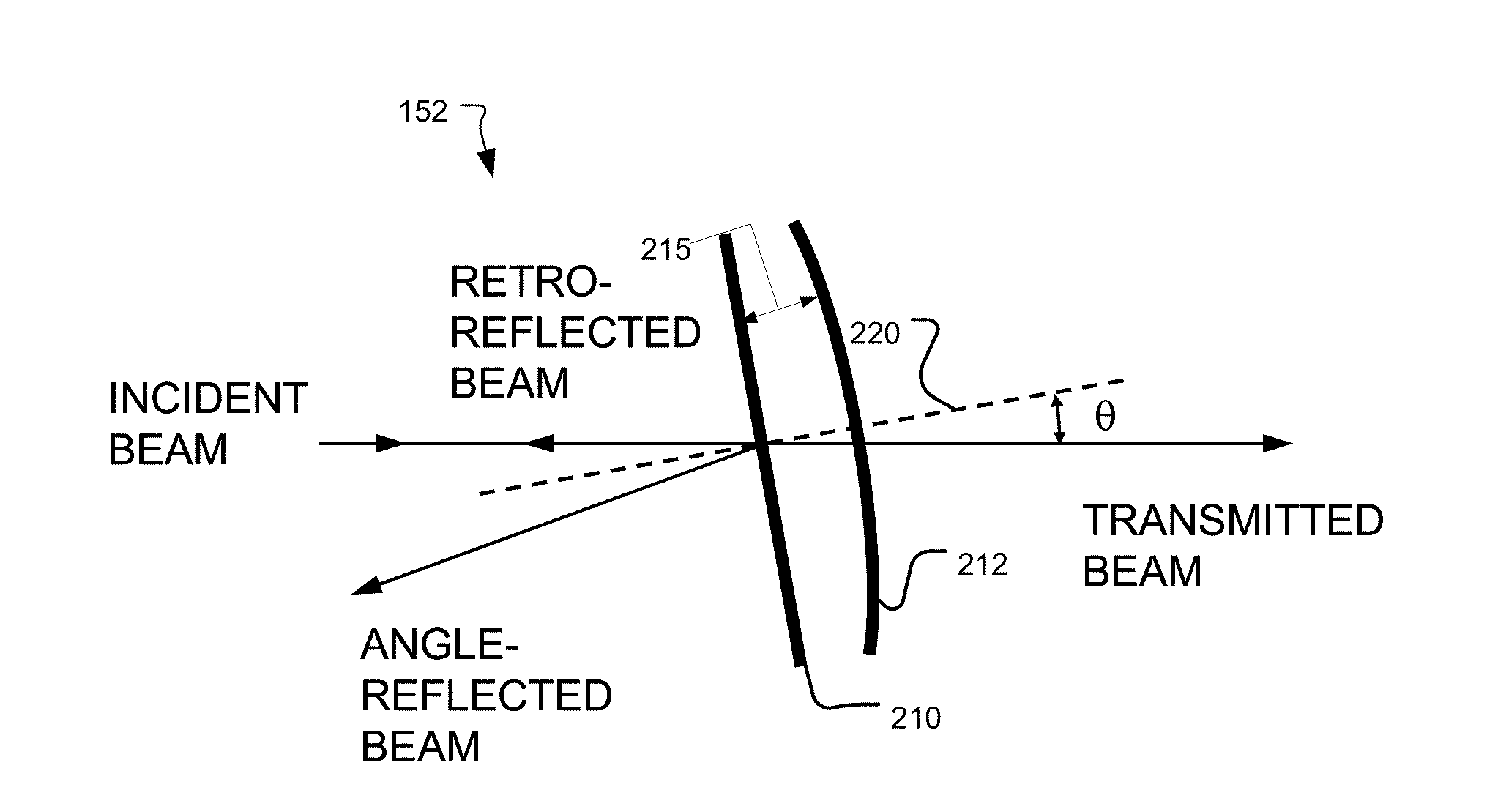Filtered ASE Swept Source for OCT Medical Imaging
a swept source and filtered ase technology, applied in the field of swept source for oct medical imaging, can solve the problems of tunable lasers using ubiquitous semiconductor gain media generally only tuning well in one direction, degrade the performance of oct systems, and laser-based swept sources, etc., to achieve a higher performance system and low cost
- Summary
- Abstract
- Description
- Claims
- Application Information
AI Technical Summary
Benefits of technology
Problems solved by technology
Method used
Image
Examples
first embodiment
[0029]FIG. 1 shows a first embodiment swept optical source 100 that has been constructed according to the principles of the present invention.
[0030]The swept source 100 comprises a broadband source 112 that generates a broadband optical signal. In general, the broadband signal is characterized by a continuous spectrum that extends in wavelength over at least 40 nanometers (nm) of bandwidth, full width half maximum (FWHM). Typically, the continuous spectrum extends over at least 70 nm and preferably over 100 nm or greater.
[0031]In the preferred embodiment, the broadband source 112 is an electrically pumped semiconductor chip gain medium that is bonded or attached to a bench B. Common examples of the source 110 include superluminescent light emitting diodes (SLED) and semiconductor optical amplifiers (SOA). The material system of the chip is selected based on the desired spectral operating range. Common material systems are based on III-V semiconductor materials, including binary mate...
second embodiment
[0047]FIG. 2 shows a second embodiment swept optical source 100 that has been constructed according to the principles of the present invention.
[0048]In this example, a first optical amplifier 140 functions in a combined role, both as a broadband ASE source and a first amplification stage. In more detail, a broadband signal is generated at a front facet of the first optical amplifier 140, preferably an SOA as described above. This broadband signal is generated by the ASE emissions of first optical amplifier 140. These emissions are coupled to a first tunable filter 116. In construction and design, the first tunable filter 116 is preferably as described in connection with the first embodiment.
[0049]The tunable signal produced by the first tunable filter is then coupled back into the front facet of the first optical amplifier 140 via an optical circulator 142. The first optical amplifier then amplifies the tunable signal, which is transmitted out of its back facet.
[0050]The amplified t...
third embodiment
[0052]FIG. 3A shows a third embodiment swept optical source 100 that has been constructed according to the principles of the present invention.
[0053]In common with the second embodiment, a first optical amplifier 140 functions in a combined role, both as a broadband ASE source and a first amplification stage. The need for the circulator is avoided by the use of a reflective narrow-band tunable filter 152 that is preferably bonded to the bench B. This element reflects only a narrowband bandwidth tunable signal.
[0054]Otherwise, the third embodiment functions as described in connection with the second embodiment, with the narrowband signal being amplified by the first optical amplifier 140. This narrowband signal is generated by the filtered ASE emissions of first optical amplifier 140. The amplified tunable signal is then further amplified, conditioned, and filtered by an optical train of elements isolator 121, tracking filter 122, isolator 124, and SOA 126 as described in connection ...
PUM
 Login to View More
Login to View More Abstract
Description
Claims
Application Information
 Login to View More
Login to View More - R&D
- Intellectual Property
- Life Sciences
- Materials
- Tech Scout
- Unparalleled Data Quality
- Higher Quality Content
- 60% Fewer Hallucinations
Browse by: Latest US Patents, China's latest patents, Technical Efficacy Thesaurus, Application Domain, Technology Topic, Popular Technical Reports.
© 2025 PatSnap. All rights reserved.Legal|Privacy policy|Modern Slavery Act Transparency Statement|Sitemap|About US| Contact US: help@patsnap.com



